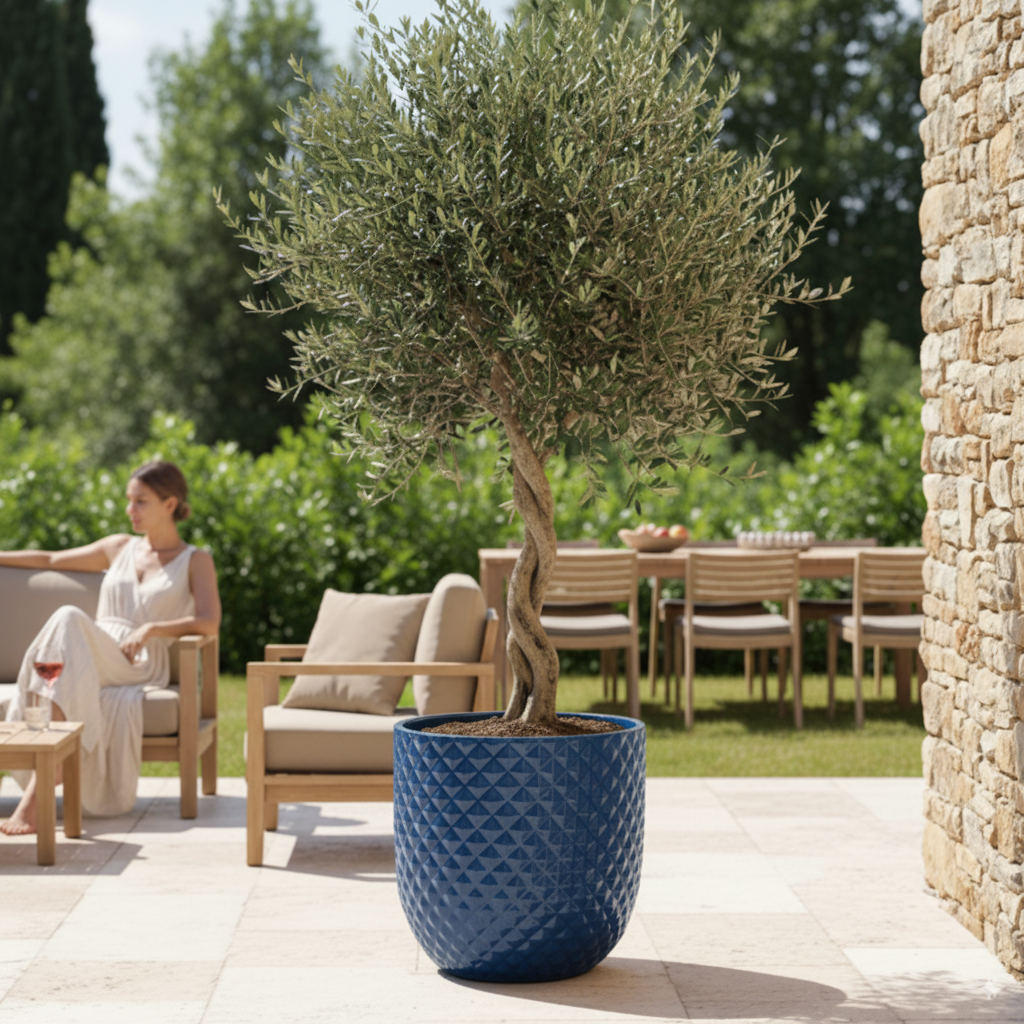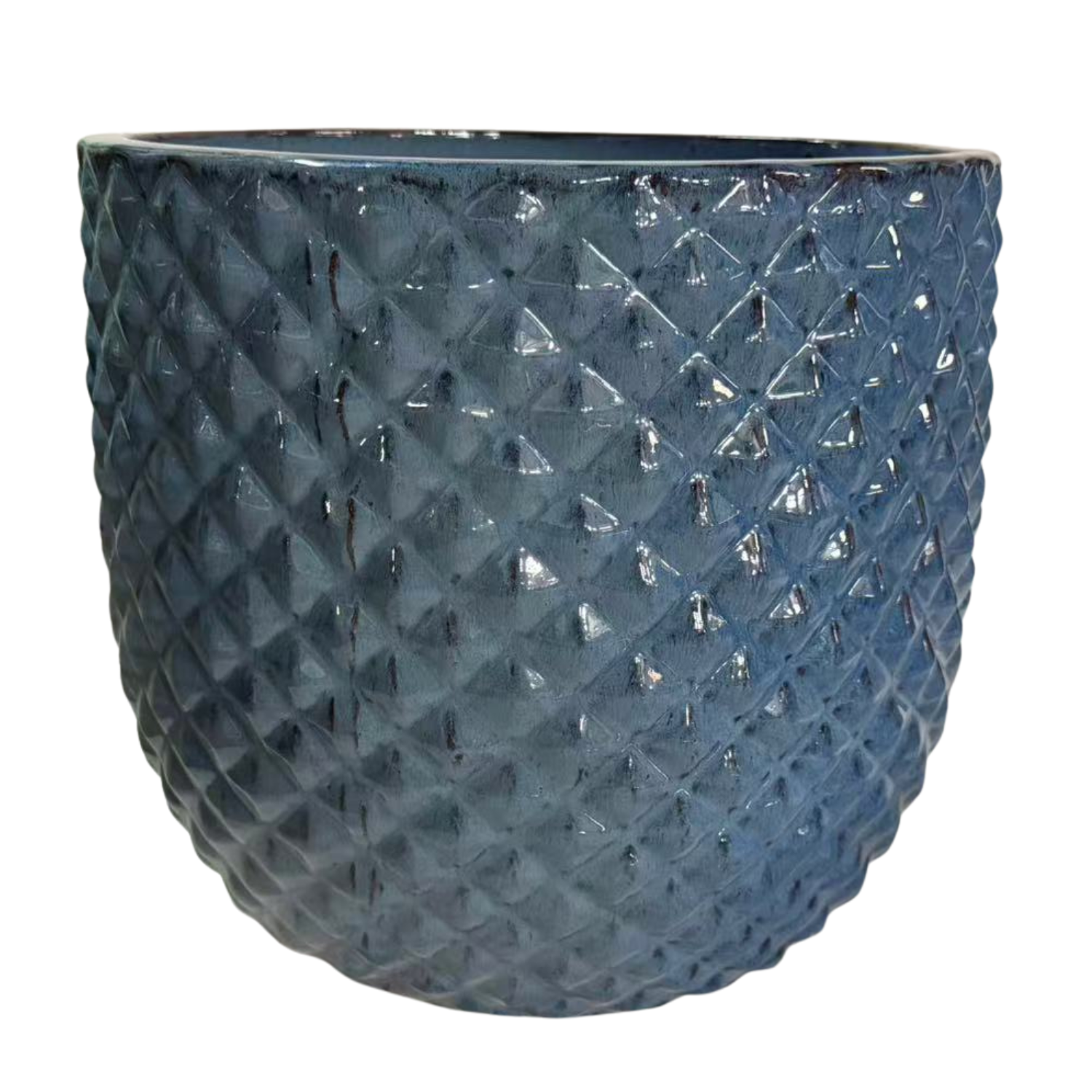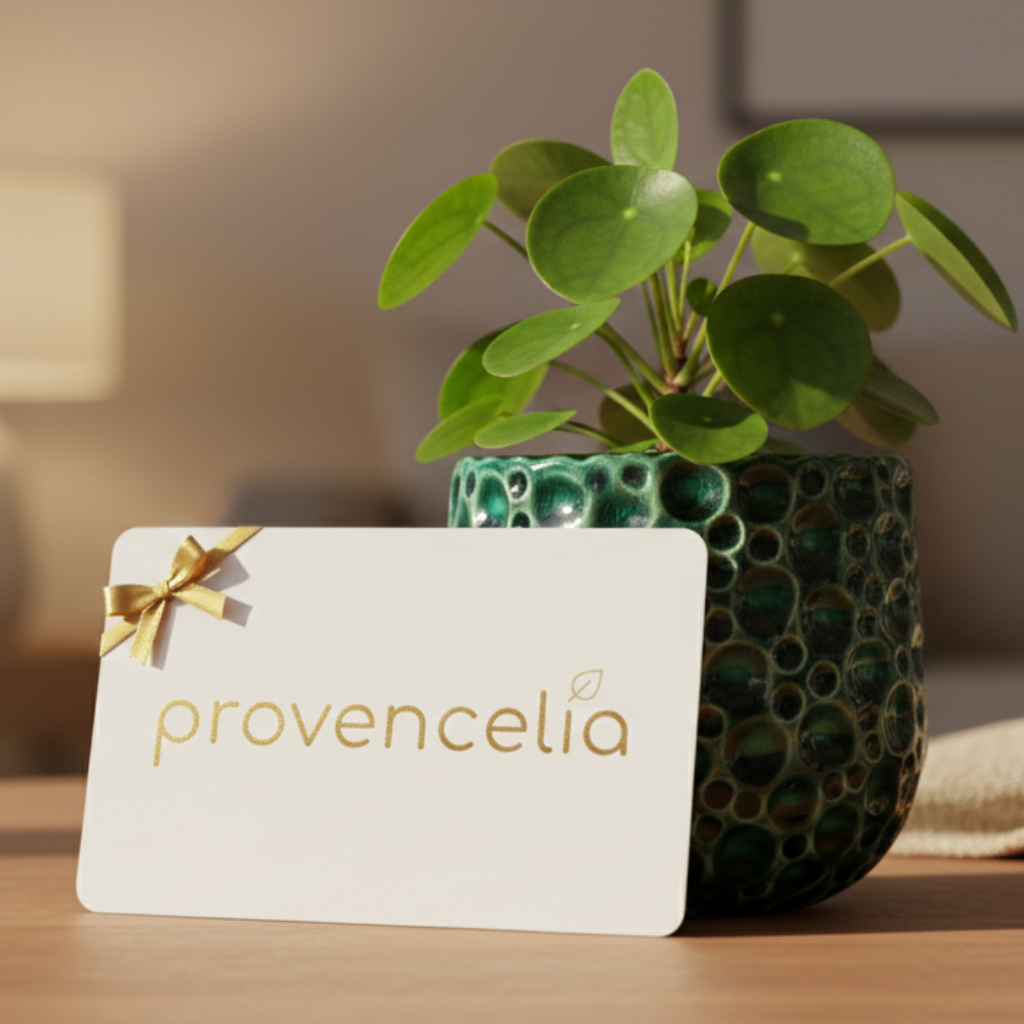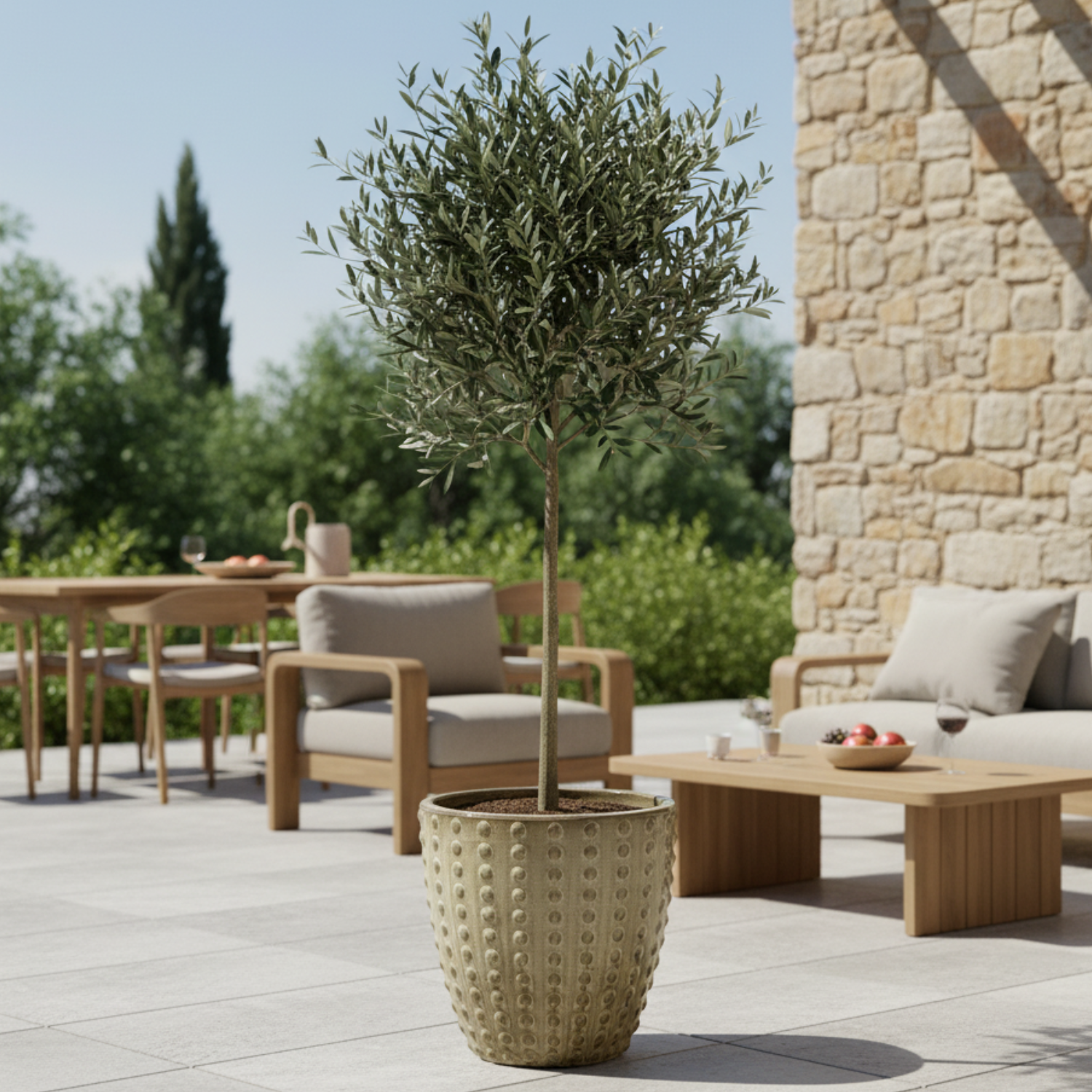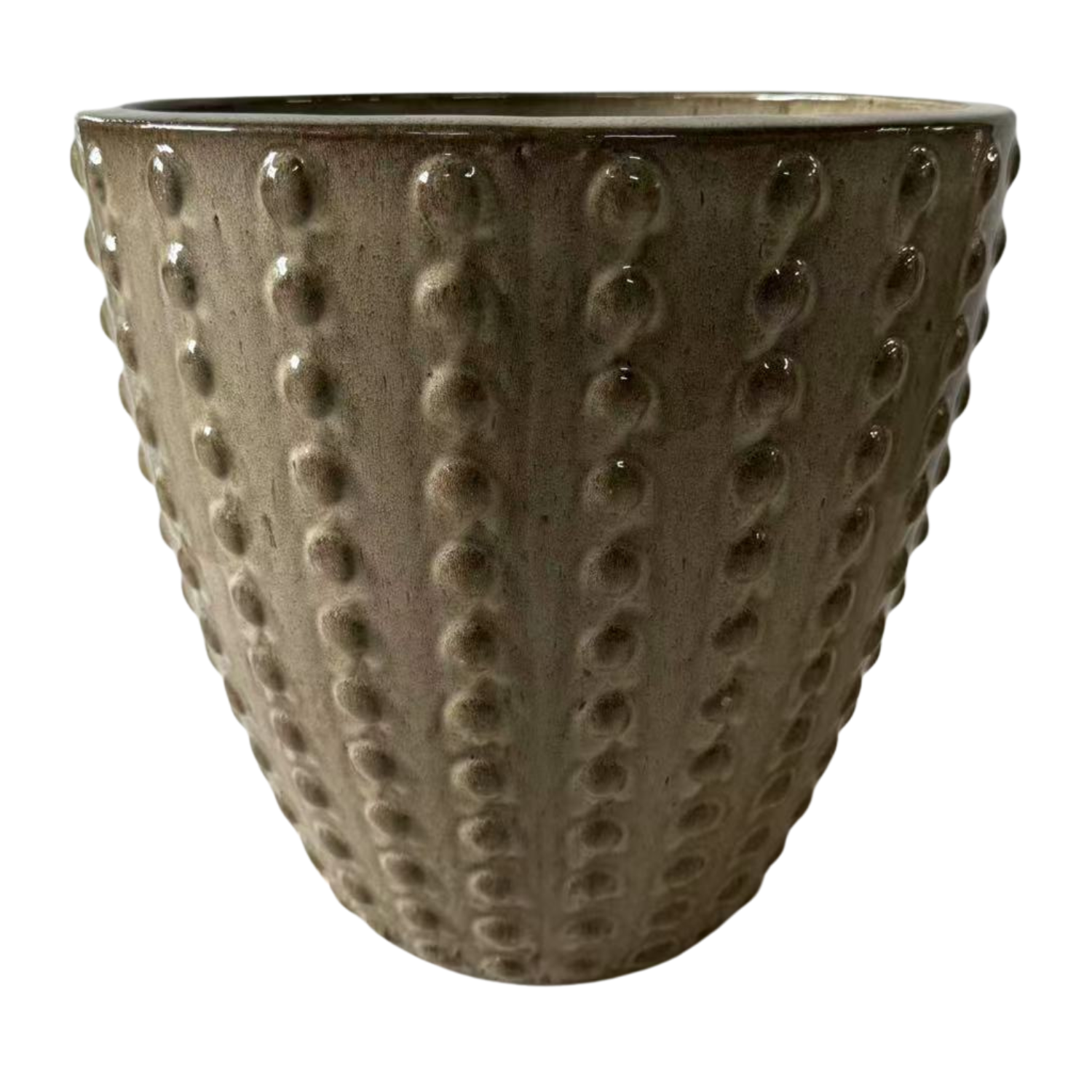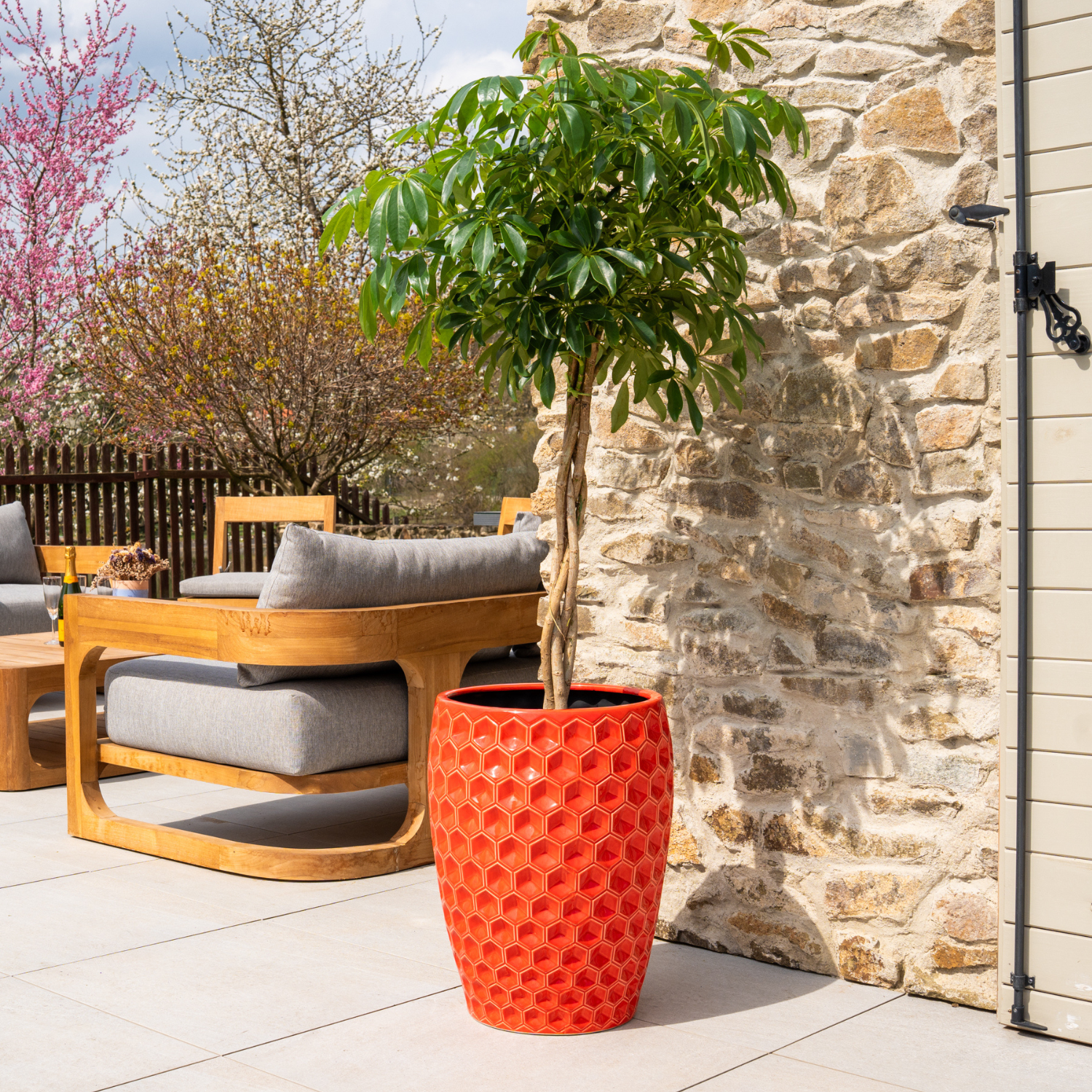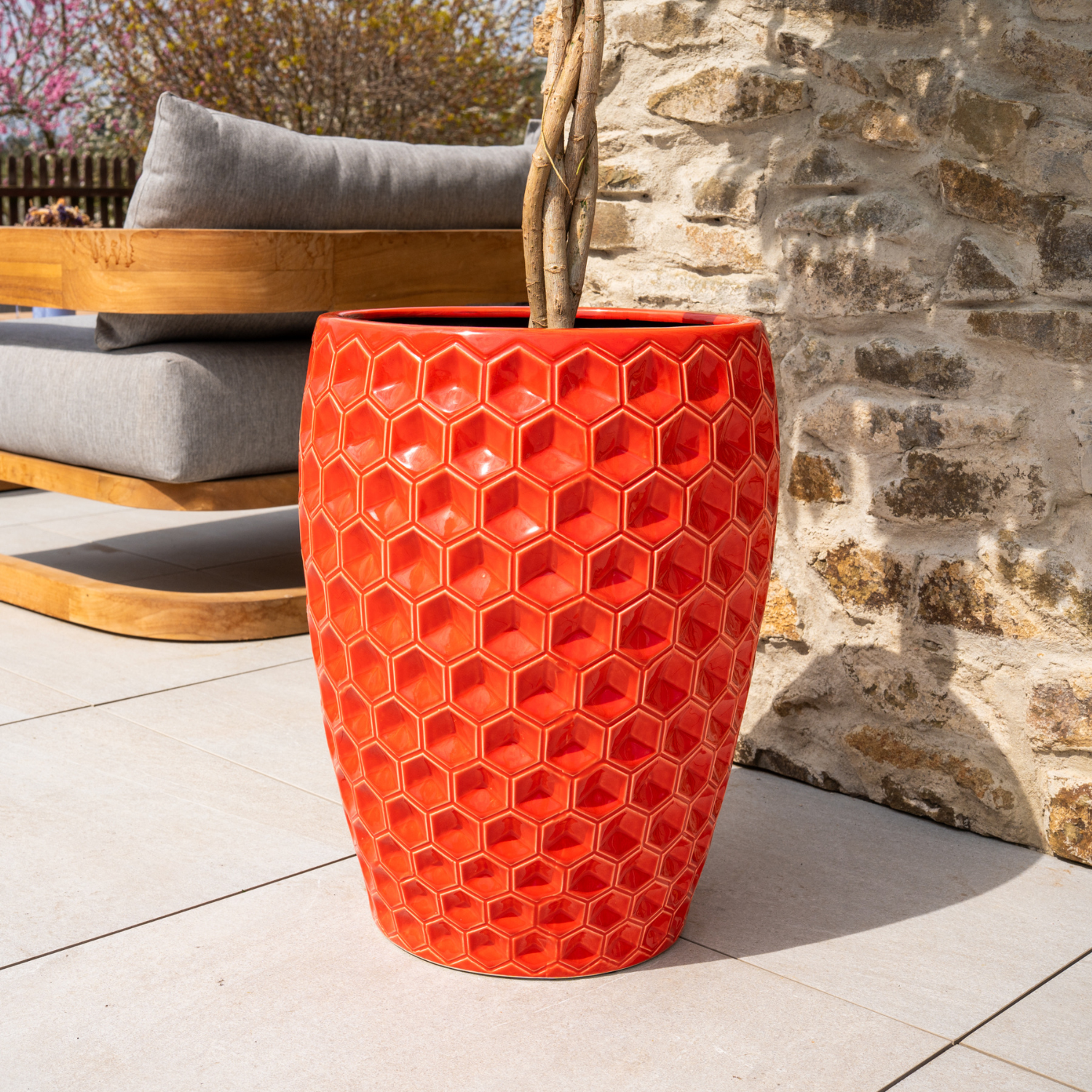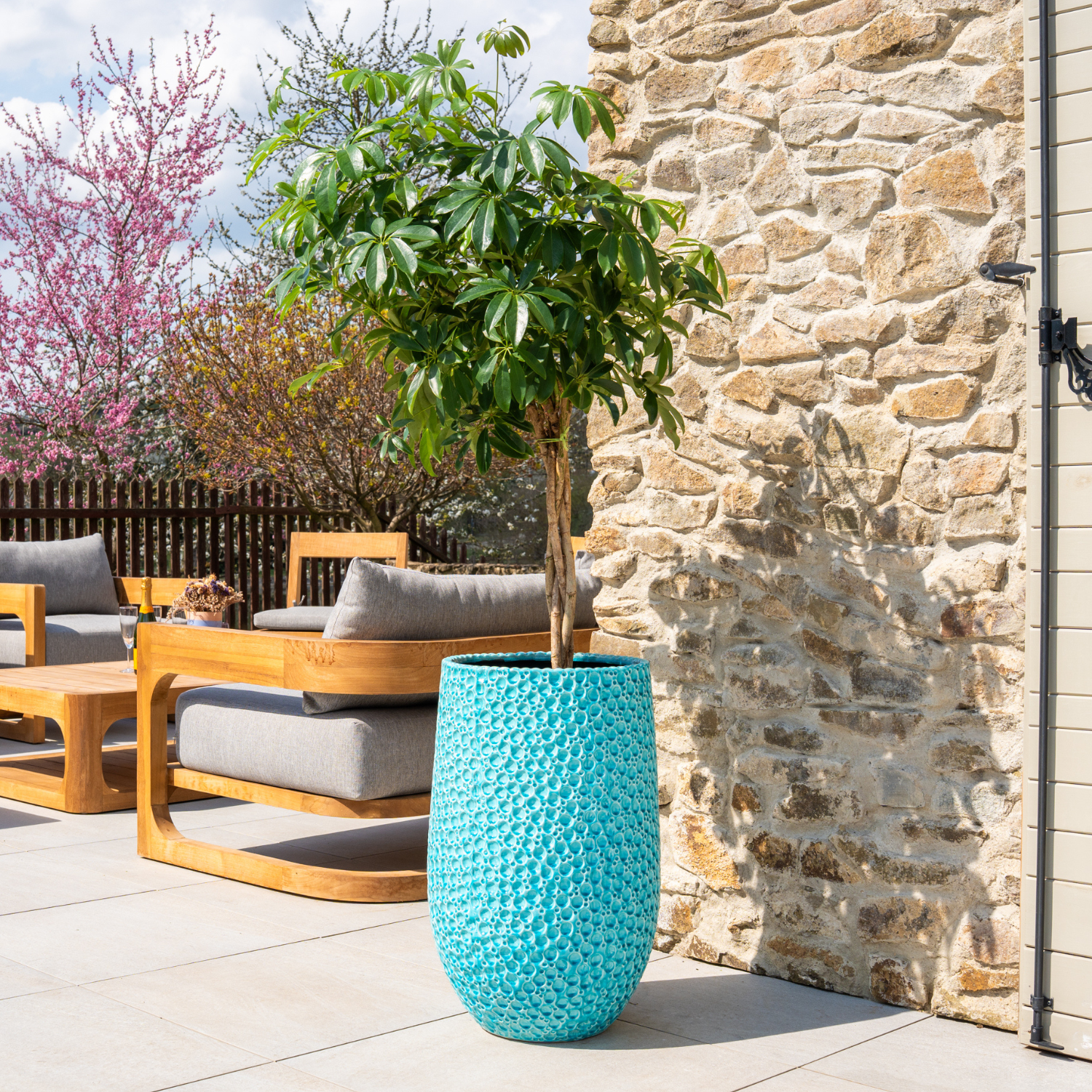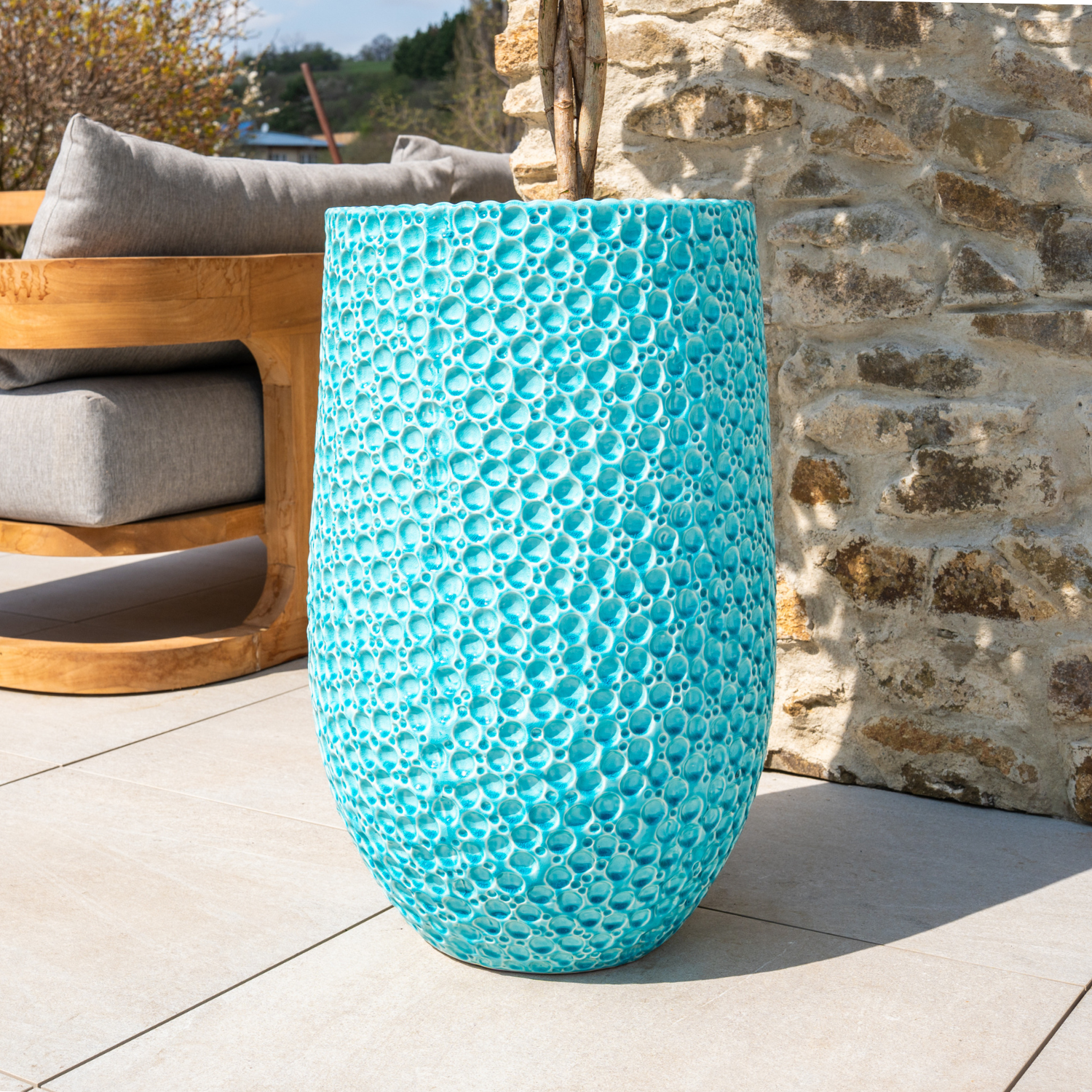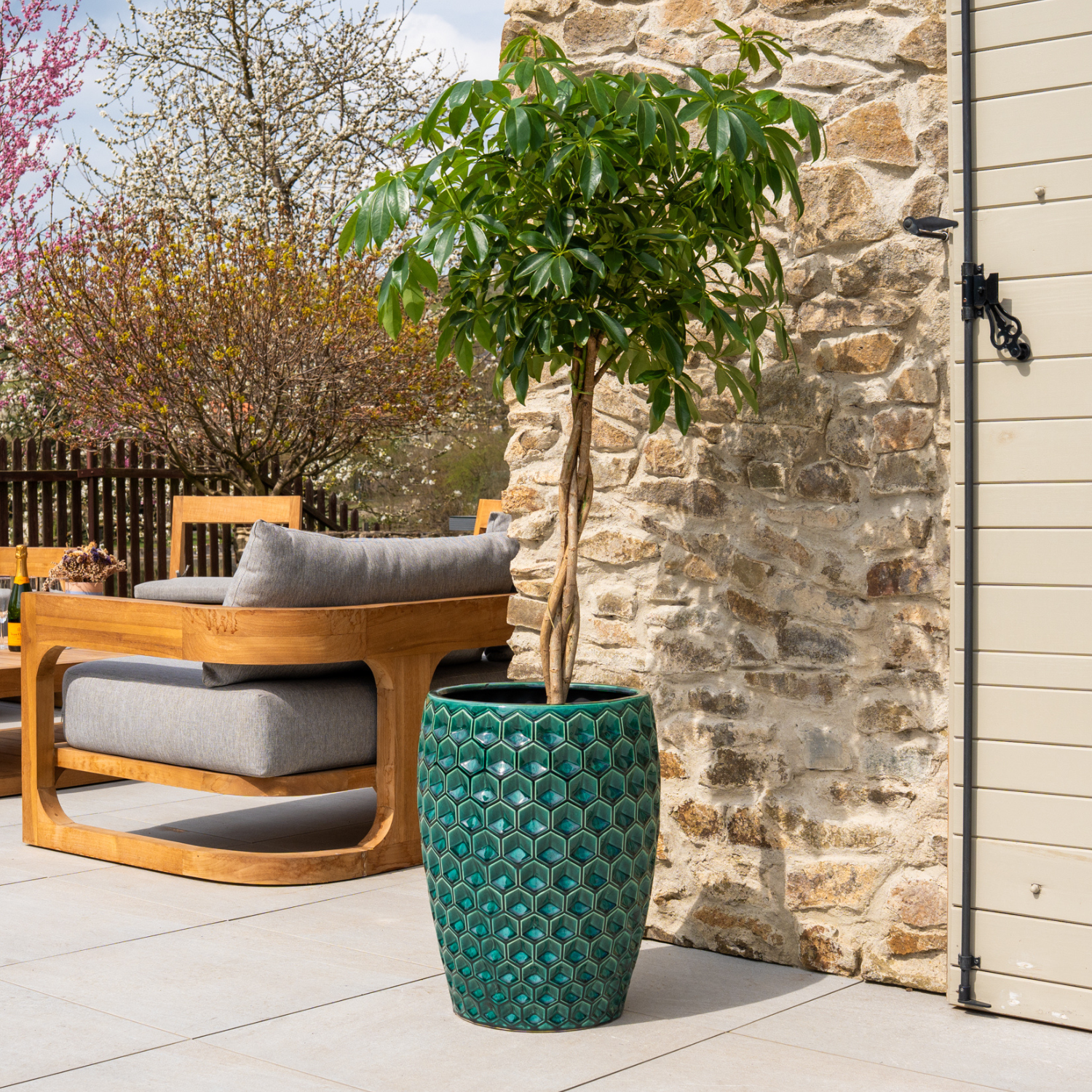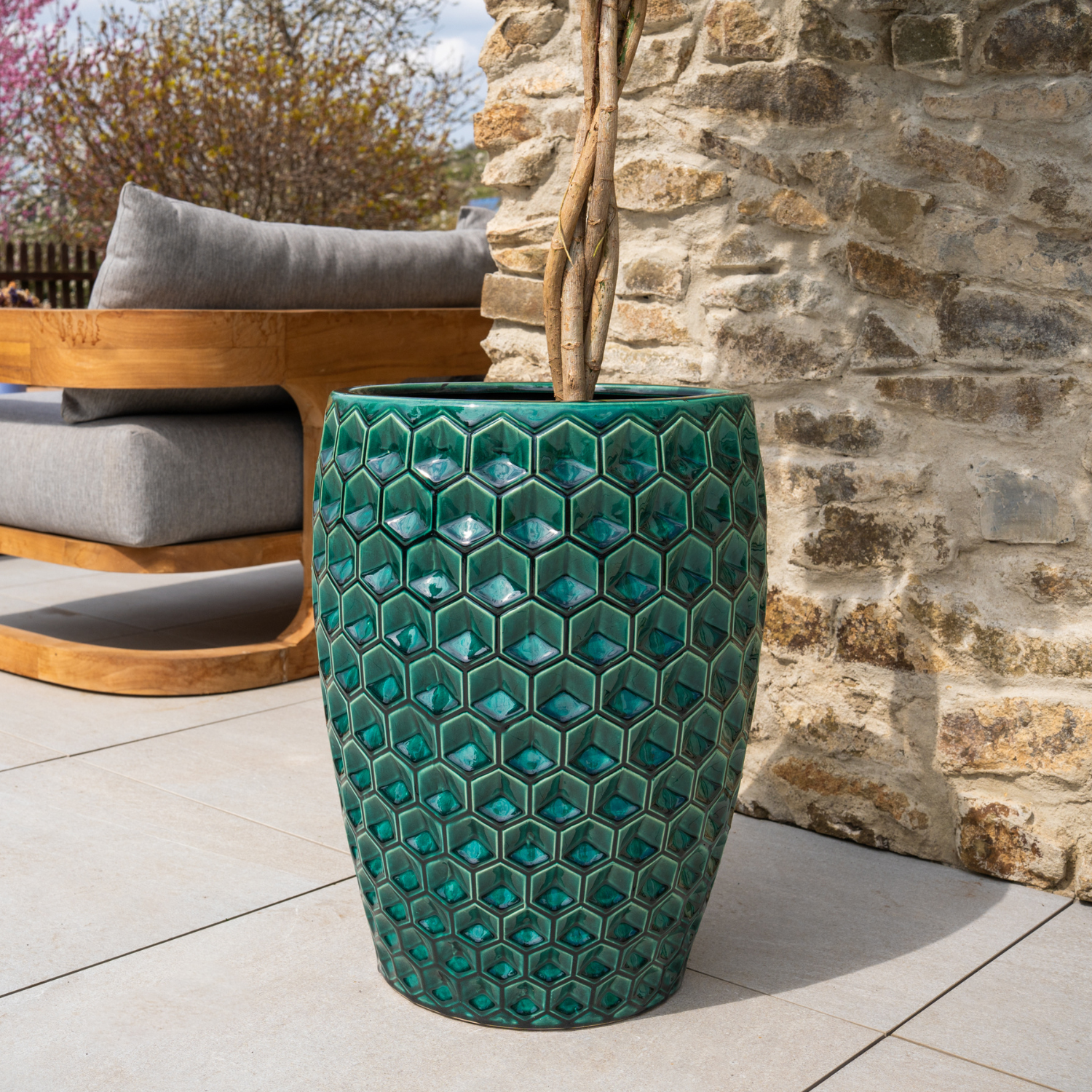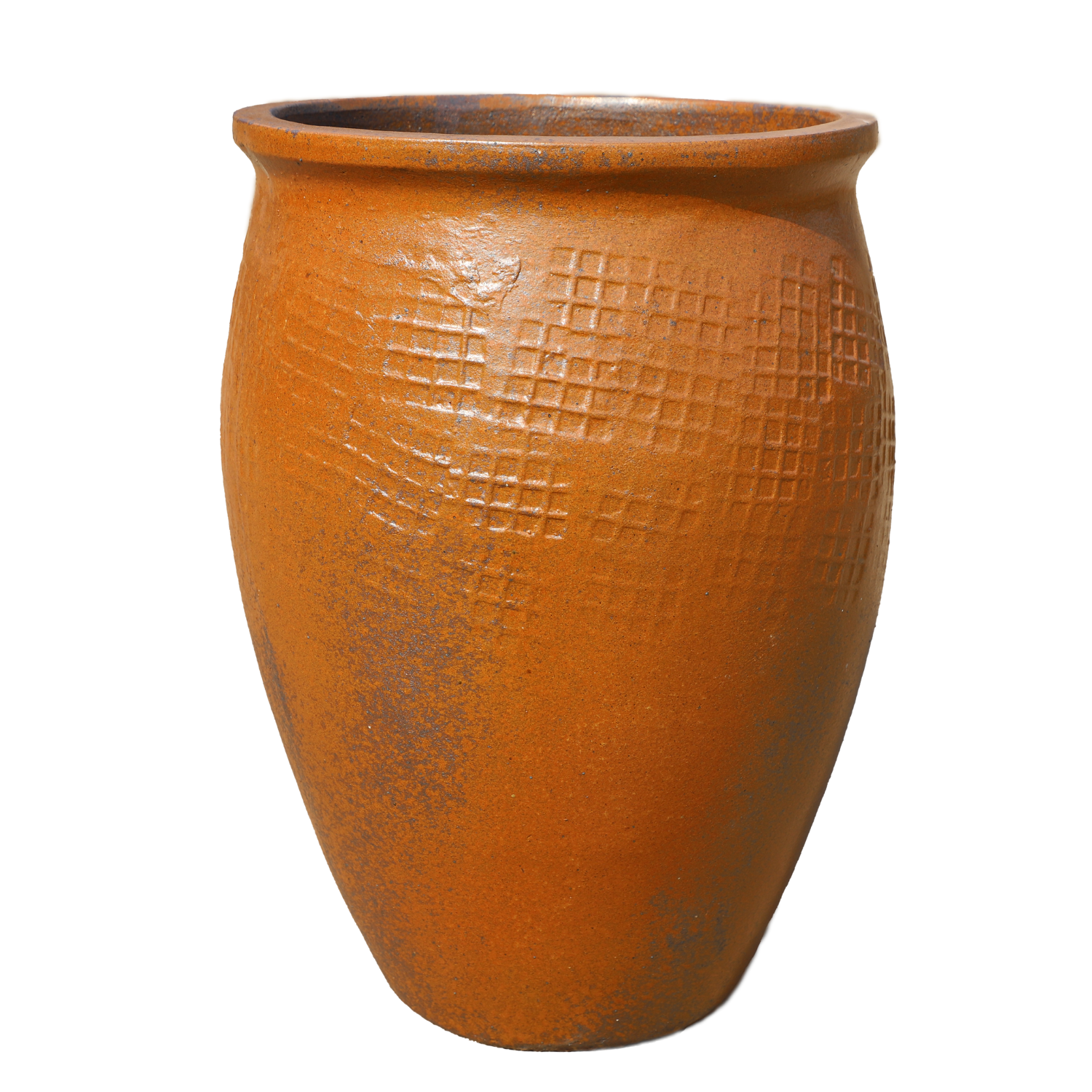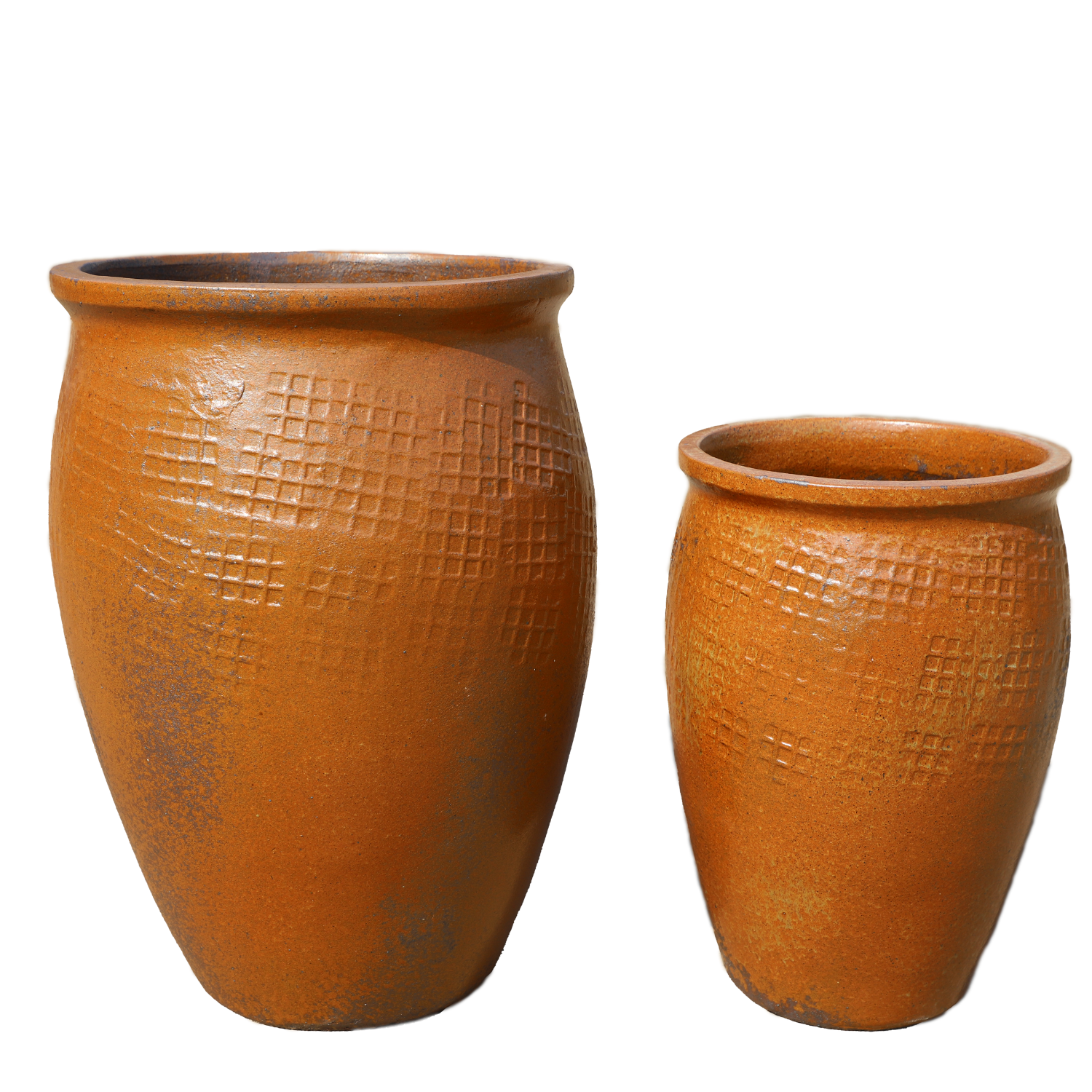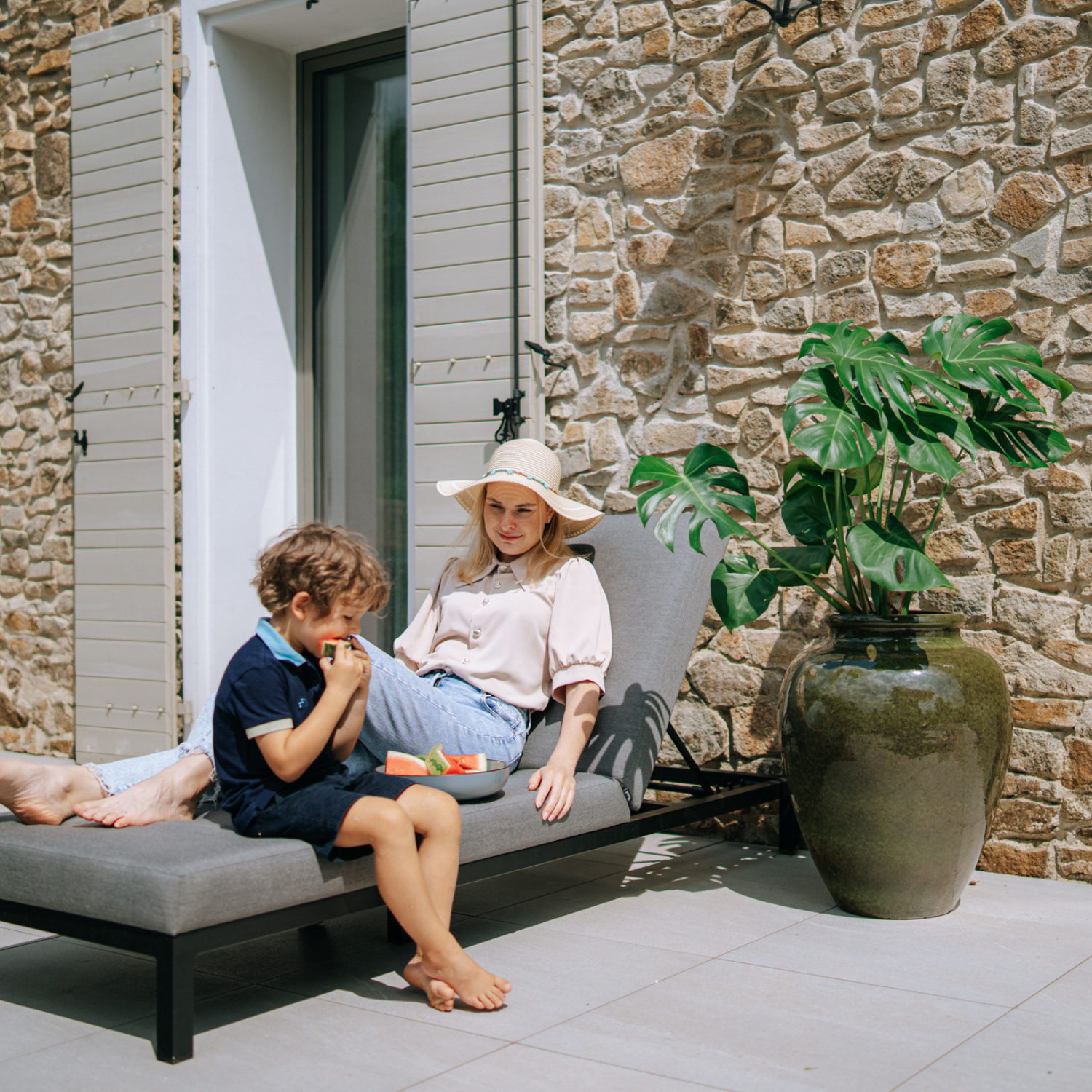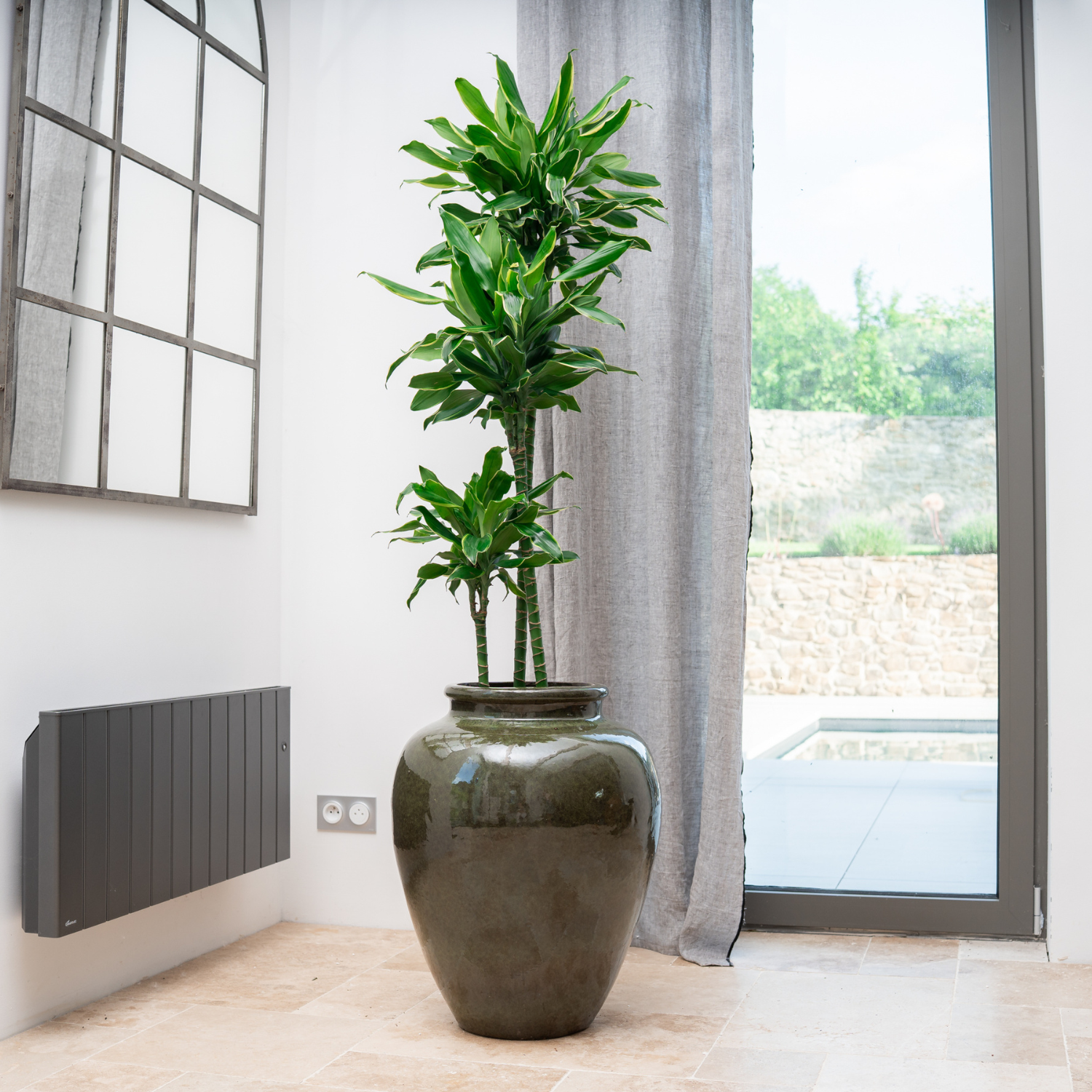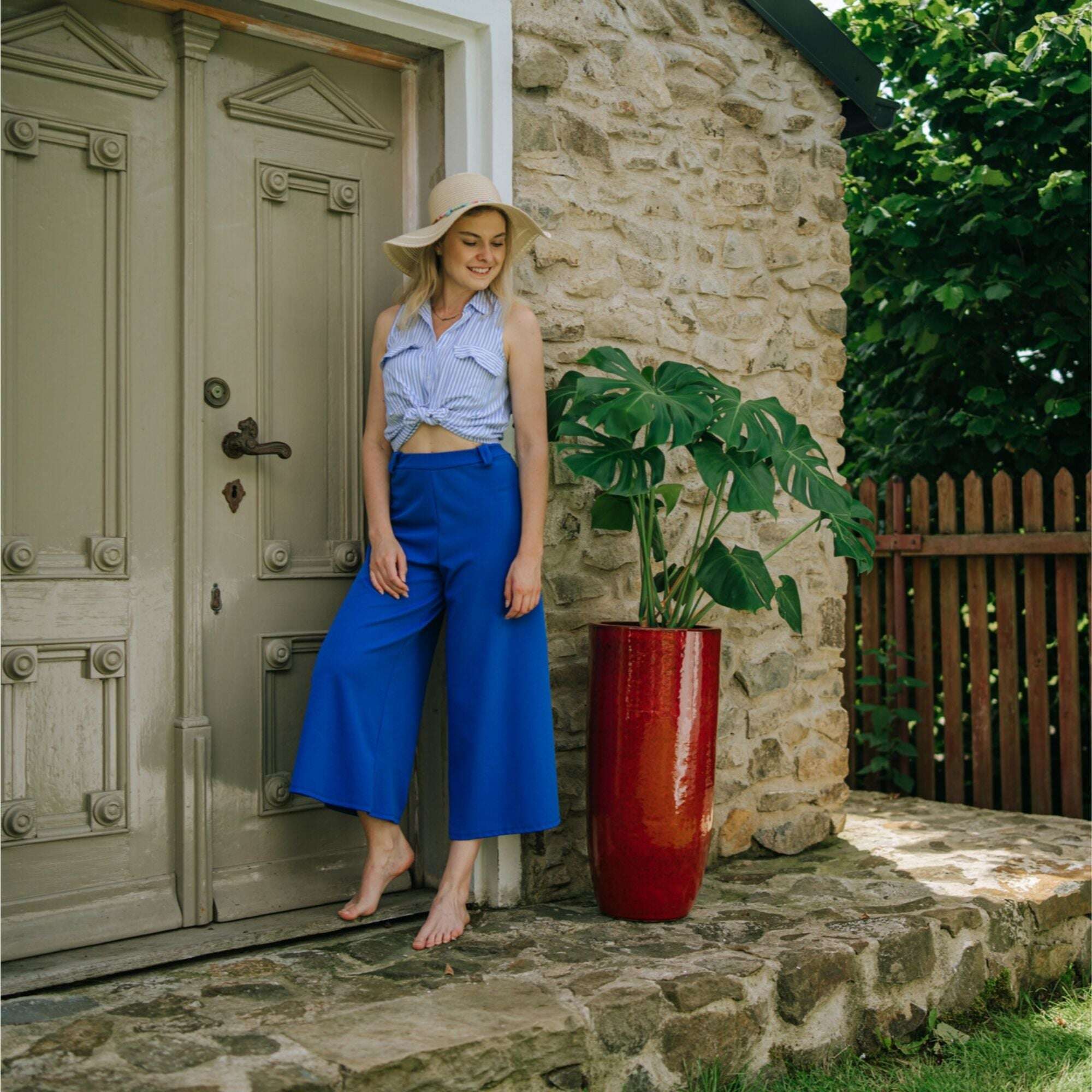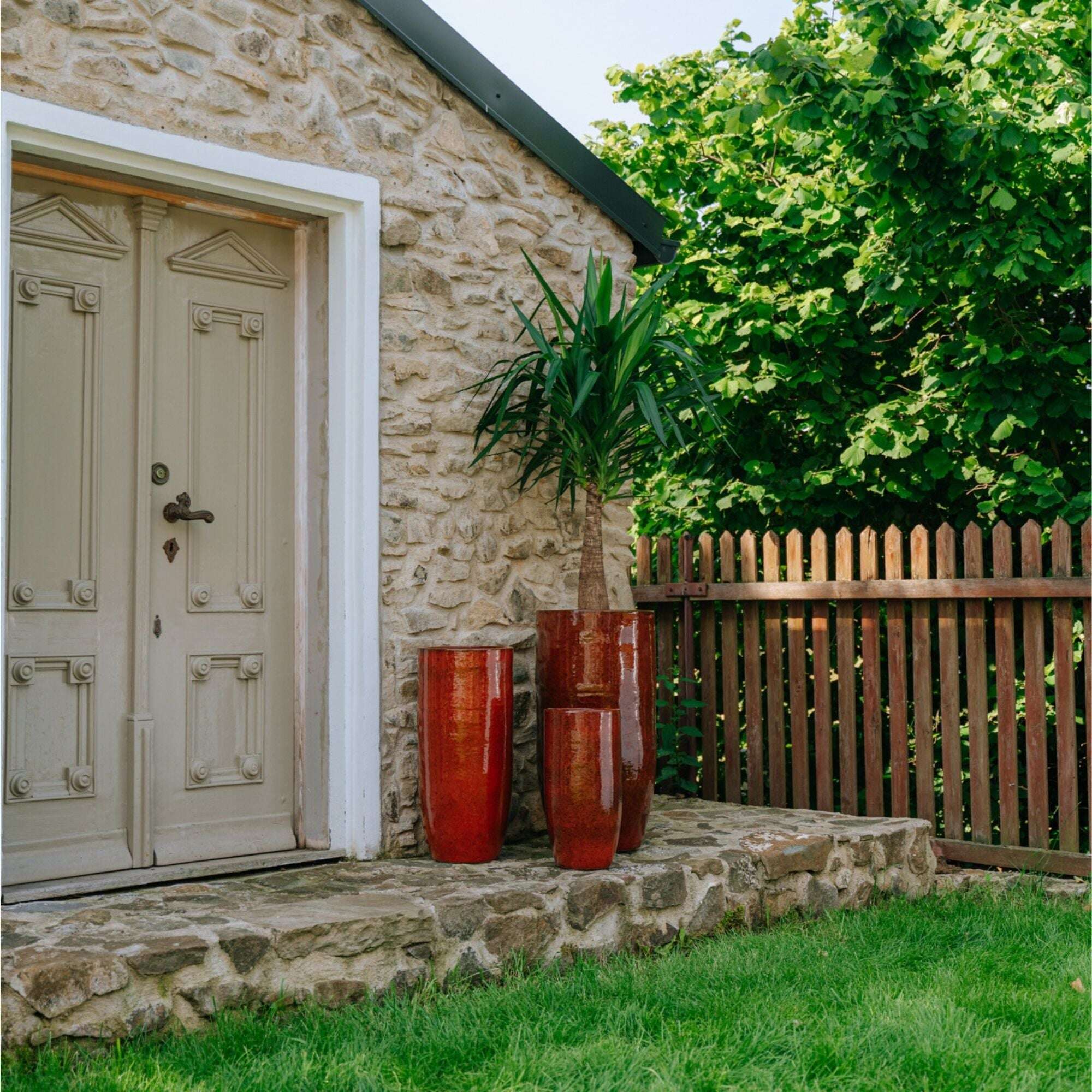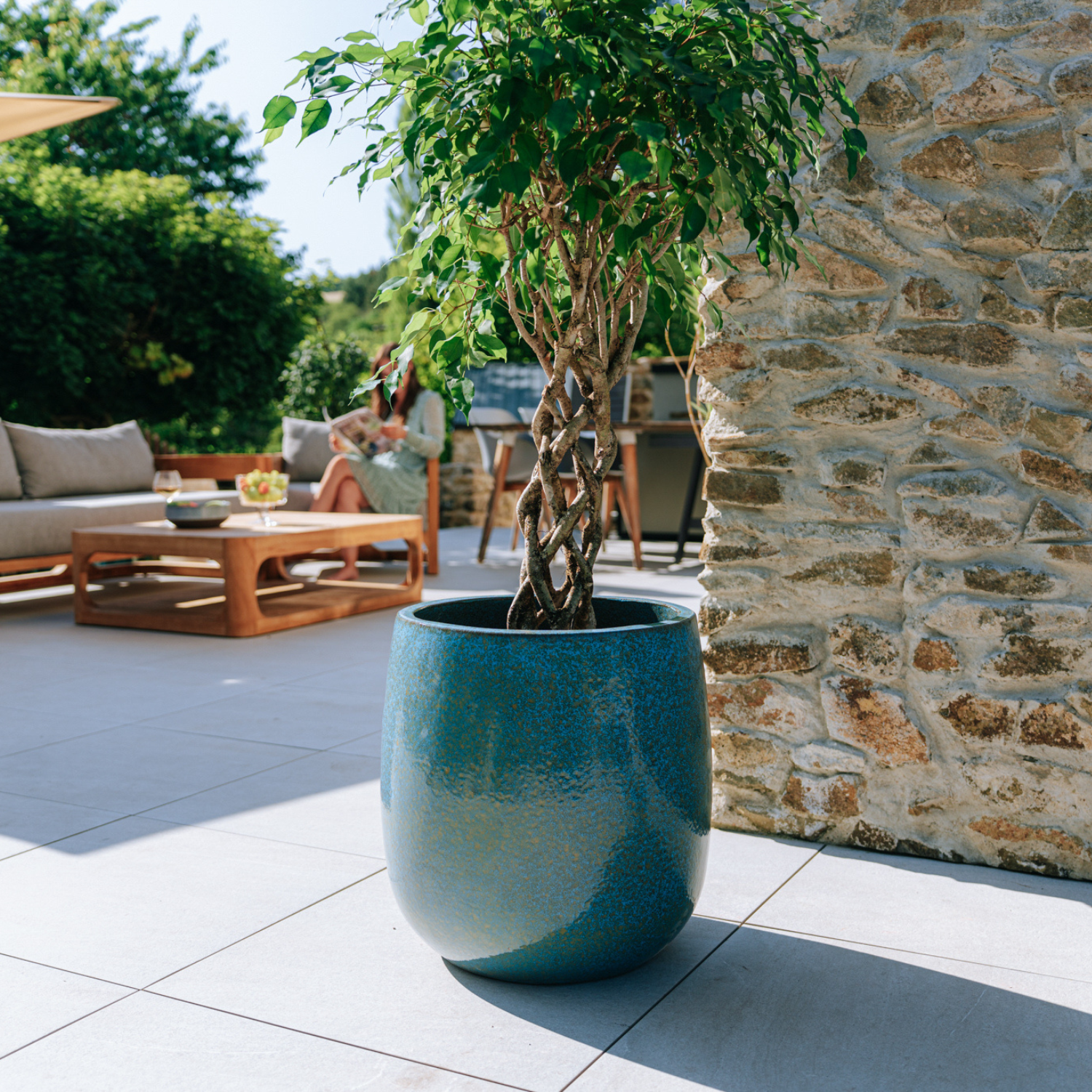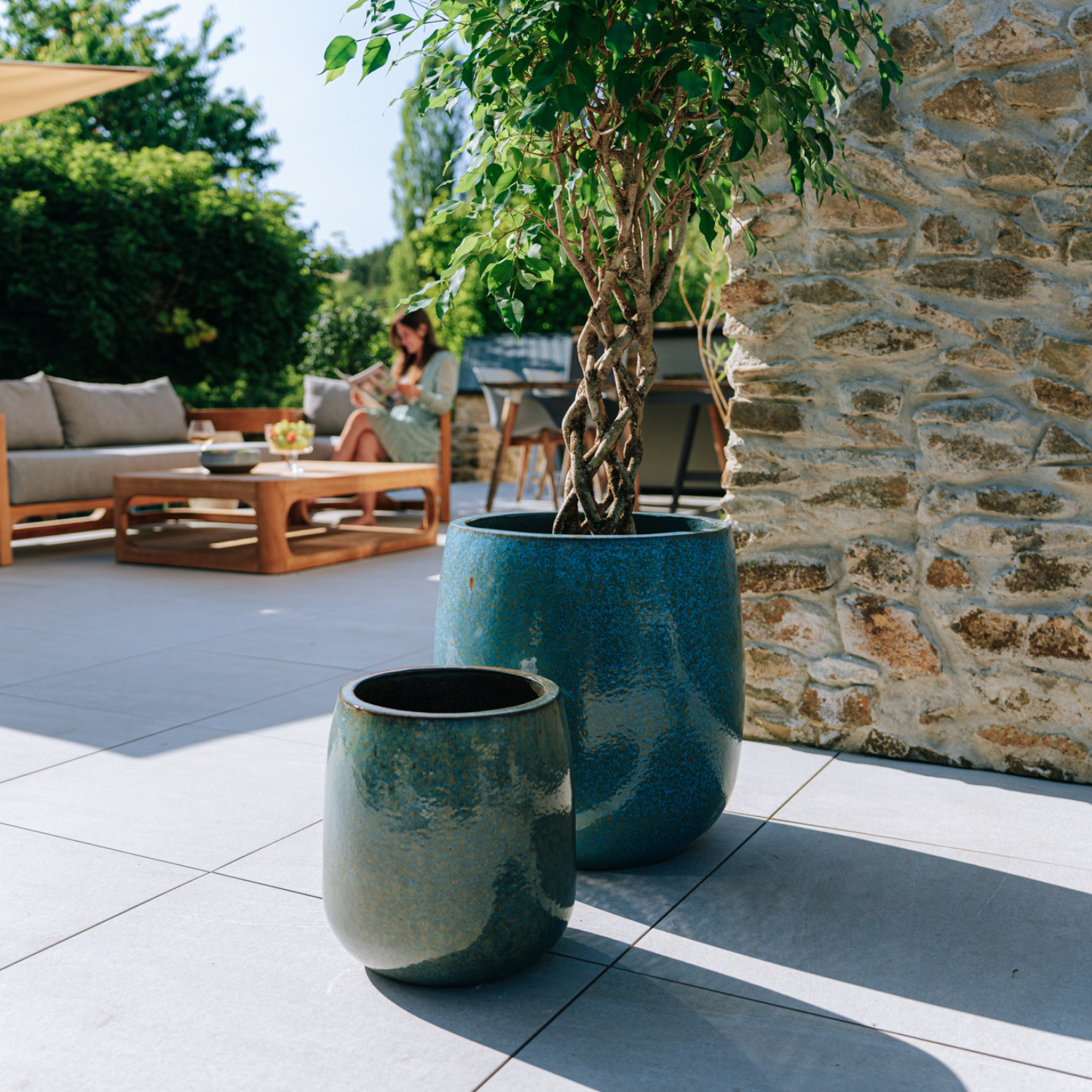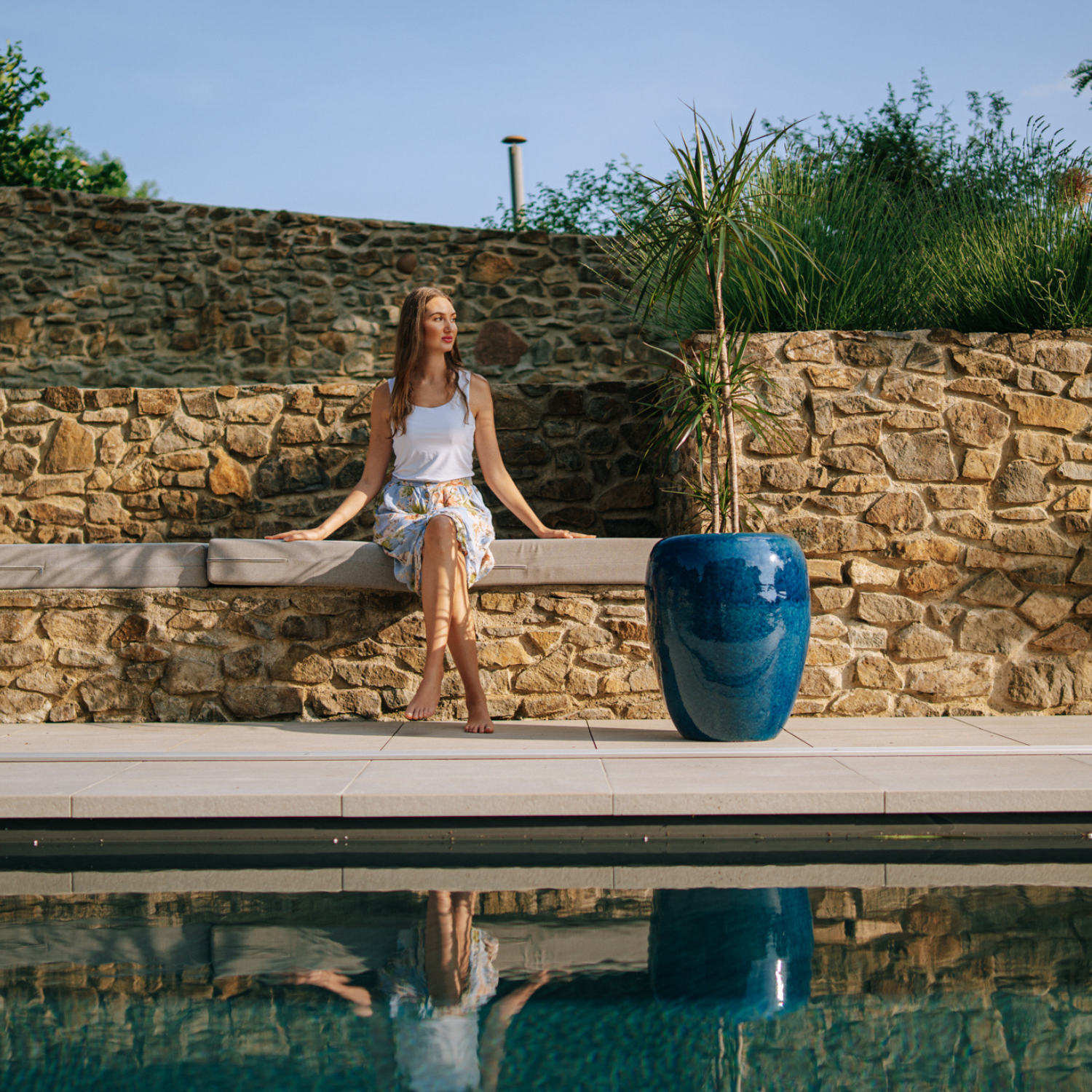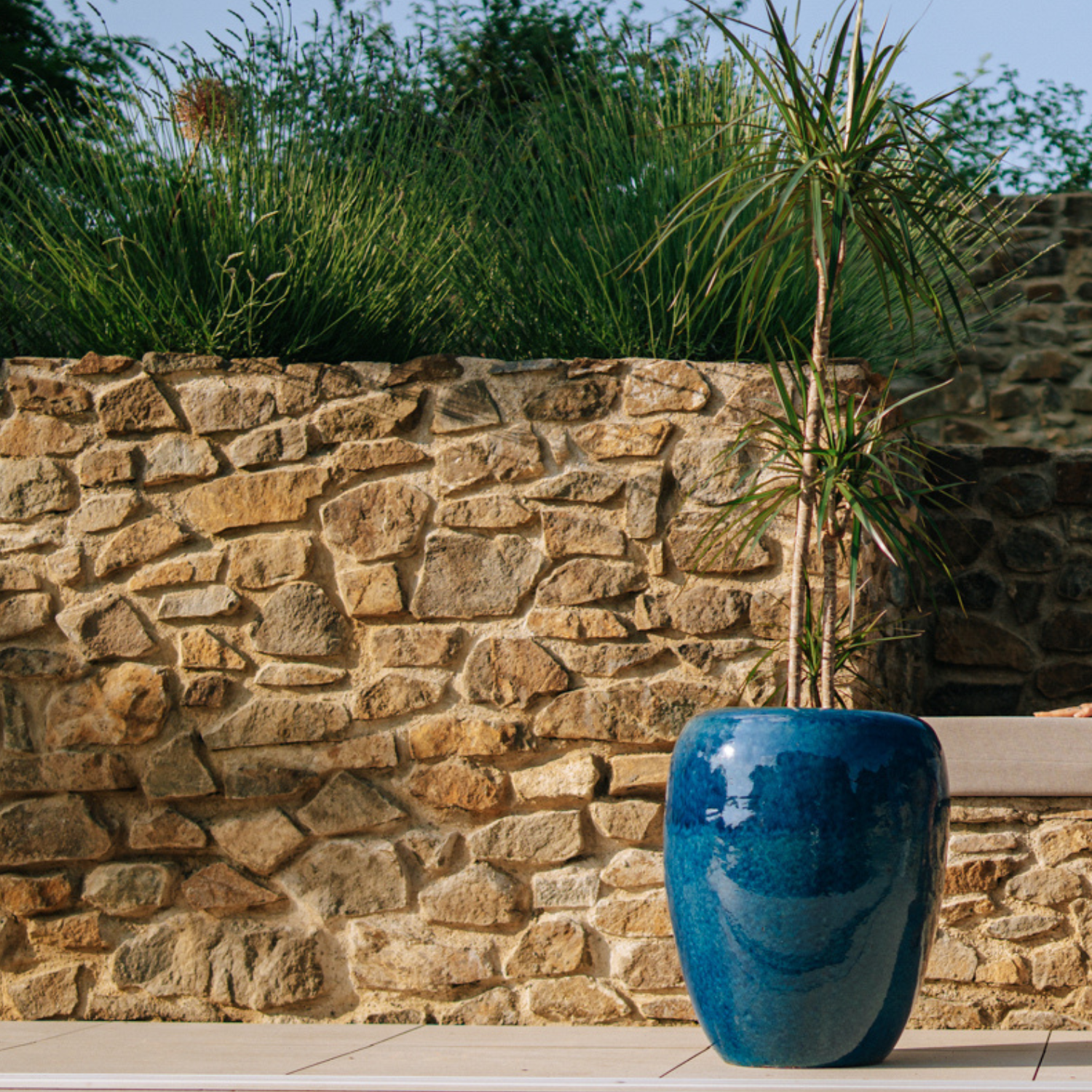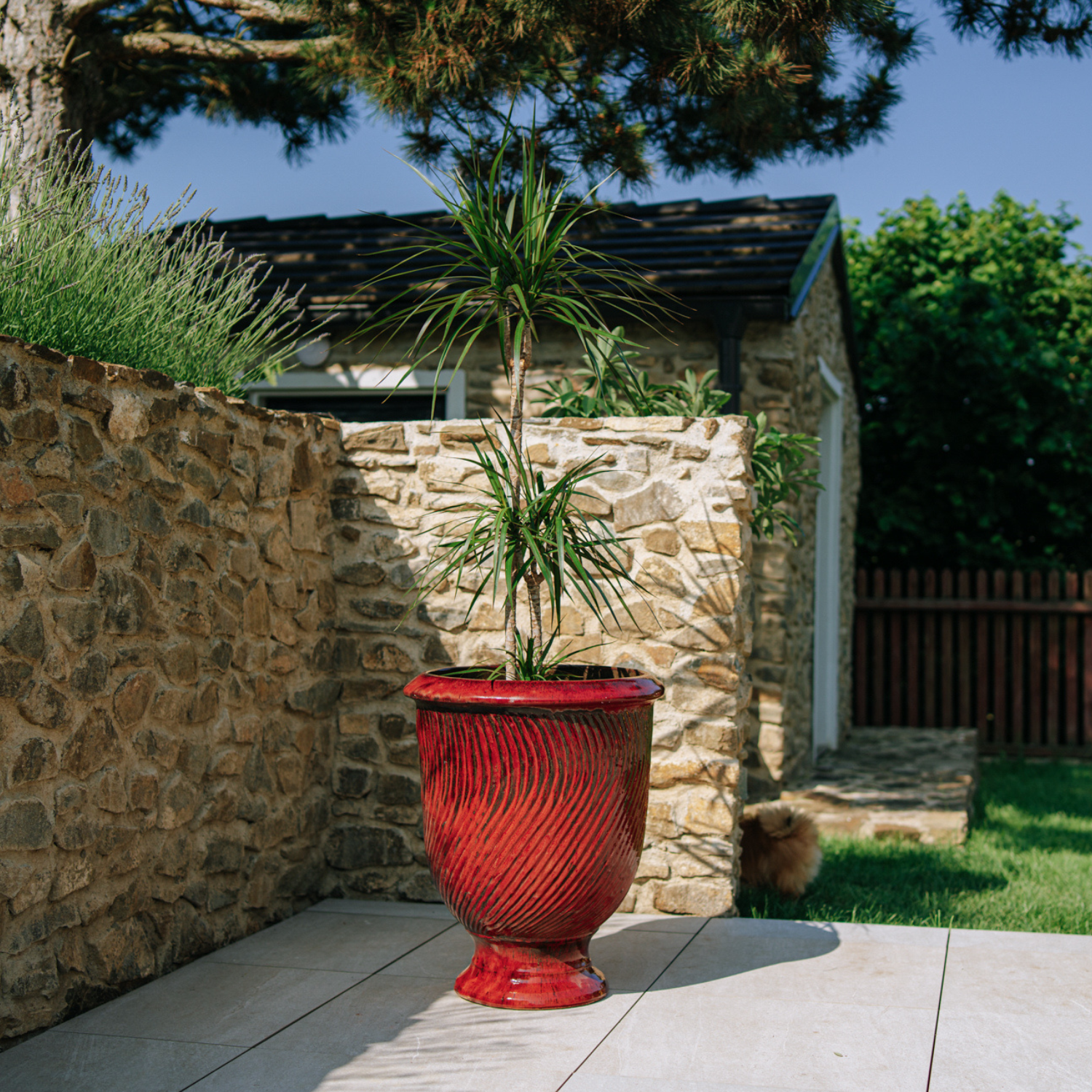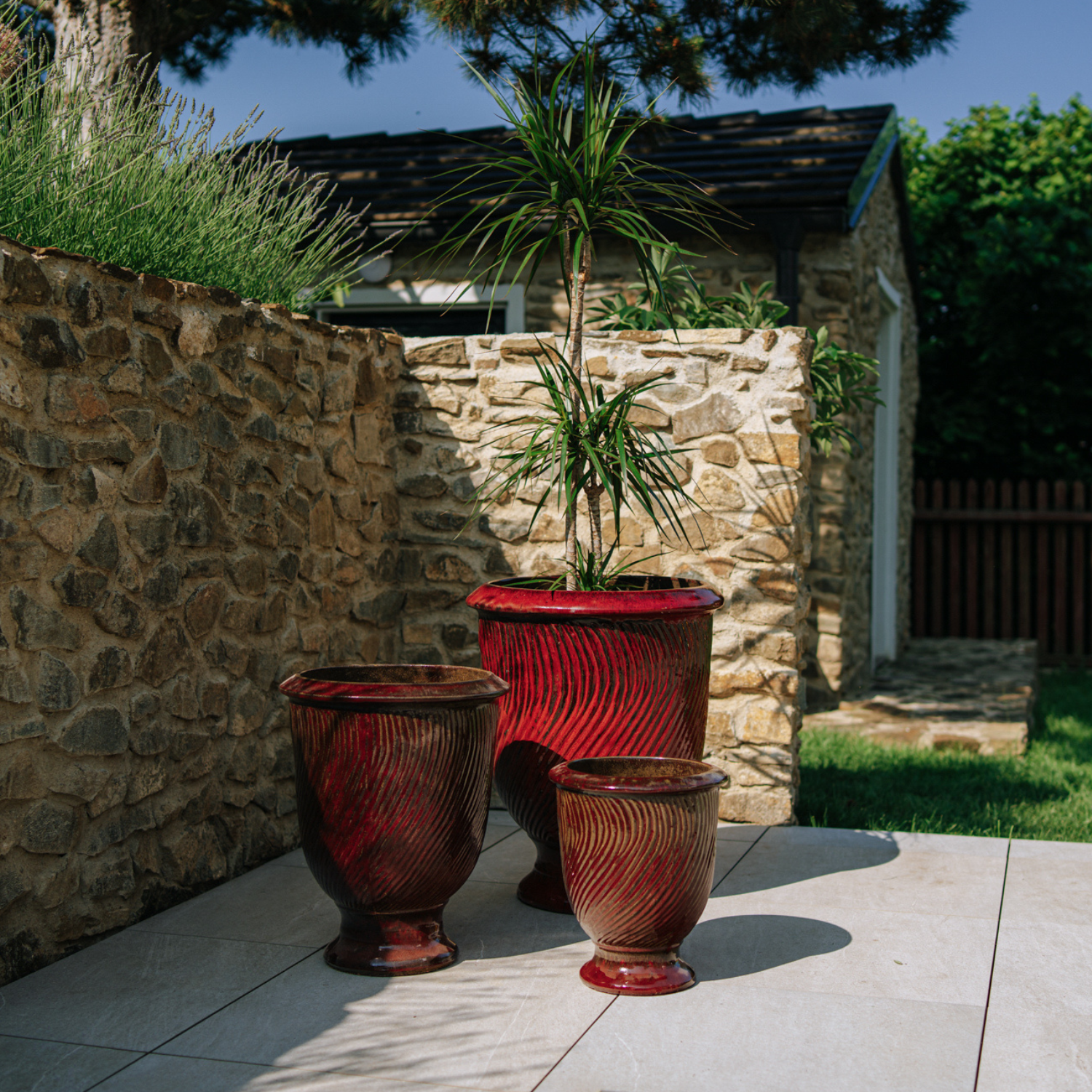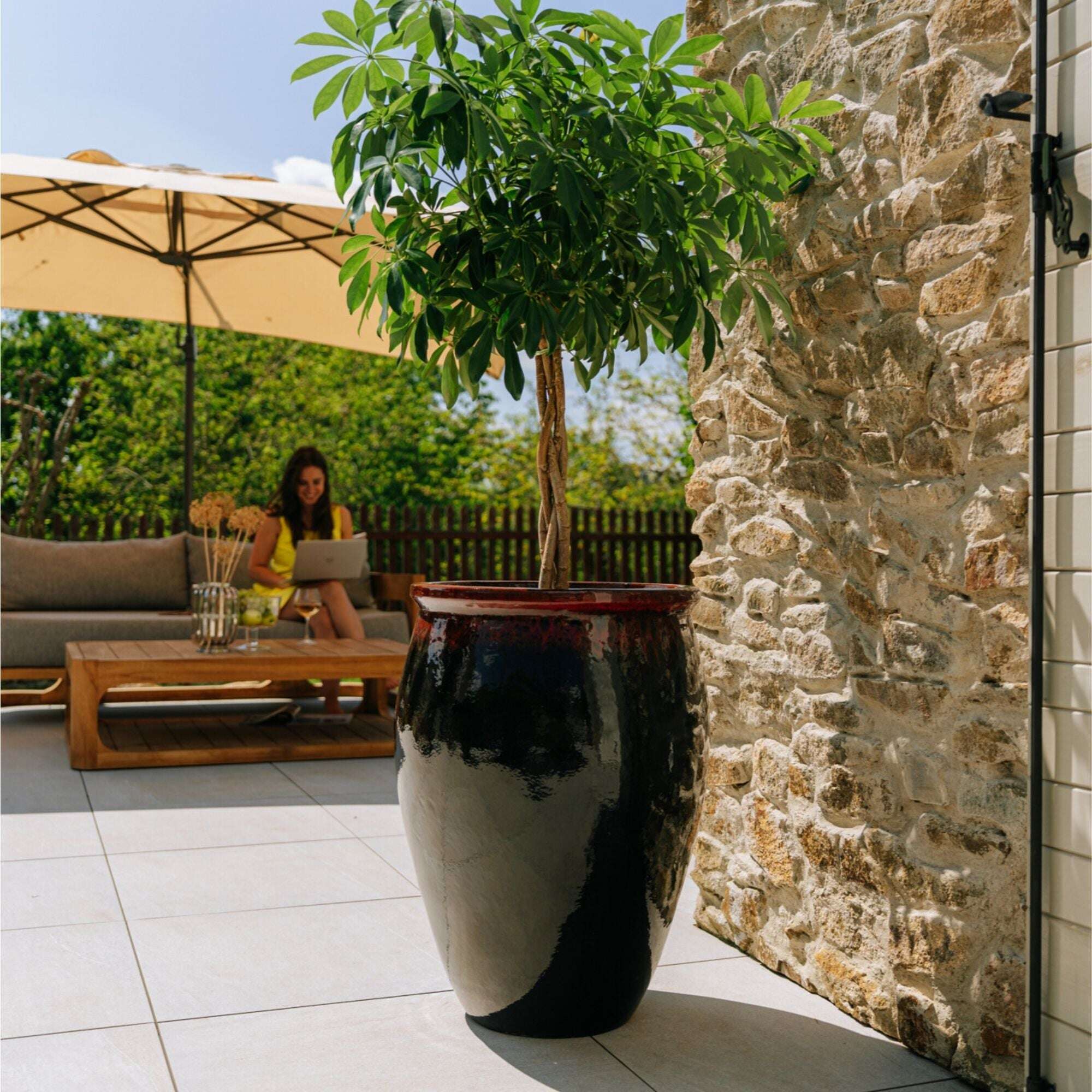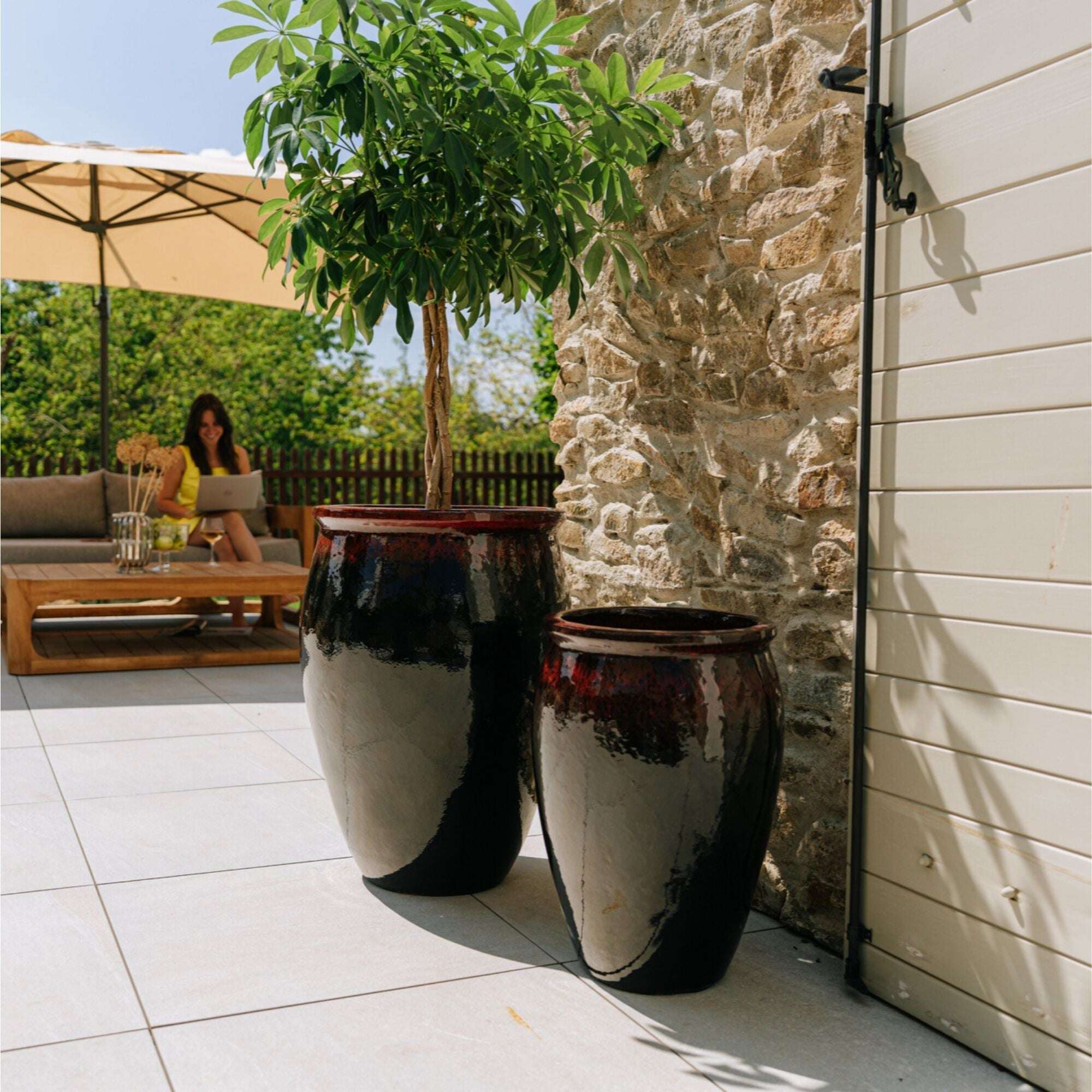Les oliviers : un symbole méditerranéen pour votre terrasse ou balcon
Les oliviers ne sont pas seulement un symbole du bassin méditerranéen, ils sont aussi des plantes élégantes et faciles à entretenir qui peuvent embellir votre terrasse ou balcon. Si vous n’avez pas de jardin ou si vous vivez dans une région aux hivers plus froids, cultiver un olivier en pot est une excellente terreauution. Voici nos conseils pour réussir cette culture.
1. Choisir le bon olivier
Toutes les variétés d’oliviers ne sont pas adaptées à la culture en pot. Nous vous recommandons de privilégier des variétés naines ou de petite taille, comme :
- Olea europaea ‘Cipressino’ – une variété compacte idéale pour les pots.
- Olea europaea ‘Arbequina’ – un petit olivier qui produit des fruits même en pot.
Ces variétés s’adaptent facilement aux espaces restreints et sont très décoratives.
2. Choisir le bon pot
Les oliviers ont besoin d’un pot de qualité offrant à la fois stabilité et suffisamment d’espace pour leurs racines. Les pots en céramique sont particulièrement recommandés, car :
- Ils sont stables et lourds, ce qui évite qu’ils ne basculent.
- Ils permettent une bonne aération des racines.
- Les pots résistants au gel, comme ceux de Provencelia, permettent de cultiver des oliviers même dans des régions aux hivers froids.
Nous conseillons un pot d’un diamètre d’au moins 40 à 50 cm pour les jeunes plants, et un pot plus grand au fur et à mesure que l’olivier grandit.
3. Un substrat et un drainage adaptés
Les oliviers nécessitent un terreau bien drainé pour éviter que les racines ne soient gorgées d’eau. Voici un mélange idéal :
- 1 part de terre de jardin
- 1 part de sable ou de perlite
- 1 part de compost de qualité
Disposez une couche de drainage (par exemple des billes d’argile ou des petits cailloux) au fond du pot pour permettre à l’excès d’eau de s’écouler facilement.
4. Emplacement et entretien
terreaueil et chaleur
Les oliviers adorent le terreaueil. Placez-les dans un endroit où ils recevront au moins 6 à 8 heures de lumière directe par jour. Ils tolèrent bien la sécheresse, mais ne prospèrent pas à l’ombre.
Arrosage
Les oliviers sont adaptés aux conditions sèches. Il est donc important de ne pas les sur-arroser. Arrosez lorsque la surface du terreau est sèche, environ une fois par semaine en été et moins fréquemment en hiver.
Engrais
Au printemps et en été, ajoutez un engrais riche en potassium pour favoriser une croissance saine et la formation des fruits. En hiver, réduisez les apports d’engrais.
5. Hivernage
Les oliviers peuvent tolérer de courtes périodes de gel, mais pour des températures basses prolongées, il est préférable de déplacer le pot dans un endroit protégé, comme :
- Une véranda
- Une pièce fraîche avec une température d’environ 5 à 10 °C
Si vous ne pouvez pas déplacer la plante, protégez-la en enveloppant le pot et le feuillage avec un voile d’hivernage.
6. Taille et mise en forme
Les oliviers tolèrent bien la taille, ce qui aide à maintenir leur forme compacte. La meilleure période pour tailler est le printemps. Supprimez les branches abîmées ou superflues pour que la canopée bénéficie d’un bon éclairage et d’une bonne aération.
7. Rempotage
Rempotez les jeunes oliviers tous les 2 à 3 ans, et les plus anciens moins fréquemment. Le rempotage se fait au printemps, en utilisant un pot légèrement plus grand à chaque fois.
8. Les fruits, est-ce possible ?
Oui, les oliviers en pot peuvent produire des fruits, mais ils ont besoin de beaucoup de terreaueil et d’un apport régulier en engrais. Les fruits mûrissent généralement à l’automne, mais sachez que les jeunes plants ne produisent des olives qu’après quelques années.
Conclusion
Cultiver un olivier en pot est une façon magnifique d’apporter une touche méditerranéenne à votre maison. Avec un pot de qualité, comme ceux de Provencelia, et un entretien adapté, votre olivier pourra prospérer même dans des conditions climatiques plus froides. Non seulement il embellira votre espace, mais il pourra aussi, avec le temps, vous offrir une récolte d’olives maison !

